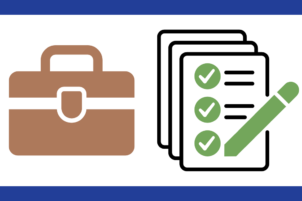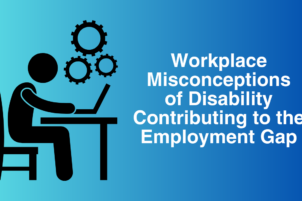When most people think about going to the polls to vote, they aren’t thinking about accessibility. But for the 61 million Americans with disabilities, accessibility is always on their minds.
The Current Landscape
The Americans with Disabilities Act (ADA) requires state and local governments and elected officials to ensure that people with disabilities have a full and equal opportunity to vote in all elections. However, a study by the Election Assistance Commission (EAC) during and after the 2022 elections found that 14% of voters with disabilities – approximately 2.2 million people – experienced difficulties voting. The EAC study concluded that if people with disabilities voted at the same rate as those without, there would be around two million more voters.
States can make simple changes to their polling places to ensure all citizens have an equal and full opportunity to vote. They can ensure that disabled people can get into the polling place with ramps or elevators, hold the elections on the ground floor of the building, and station an elected official at each polling place specifically to assist those with disabilities during the voting process.
In regard to casting a ballot, in every state there is technology, such as the AutoMARK ballot marker, available that is specifically designed to assist those with disabilities to vote. The AutoMARK ballot marker was patented in 2003 and includes a touch screen with zoom and contrast features that make it easier for the voter to see. It also has the option to be translated into different languages, a keypad marked with Braille, and it can be used with headphones so the machine can read the ballot out loud to the voter. The AutoMARK ballot marker allows citizens with disabilities to vote independently and privately.
What’s Next
To further ensure voting accessibility, Disability Belongs™ is advocating for the Accessible Voting Act (AVA). The AVA would create an Office of Accessibility at the U.S. EAC, which would support and oversee state efforts to expand voter accessibility and serve as a resource for advocates and voters. It will also ensure that there is cultural competency training for election officials and people who work at the polls on how to create accessible polling places. Each state will be required to have an accessible website with information on all the ways to vote and instructions on how to vote accessibly.
Voting in elections is a fundamental right in a democracy, allowing citizens to shape their country’s future. As an American, you should be able to vote easily and comfortably, no matter your ability. Accessible voting ensures equality, equity, and inclusion for those with disabilities, and allows for dignity and independence. The AVA would be a vital step toward a more inclusive society where every vote is valued and heard. Learn more about how you can advocate for the AVA in our Action Center.






